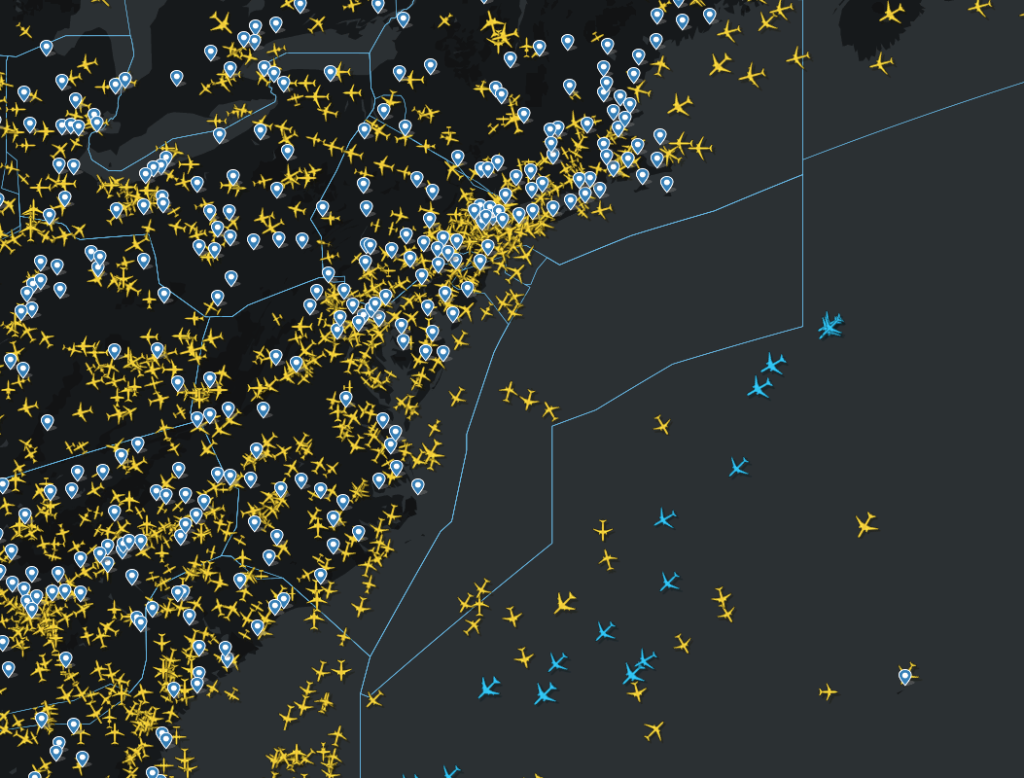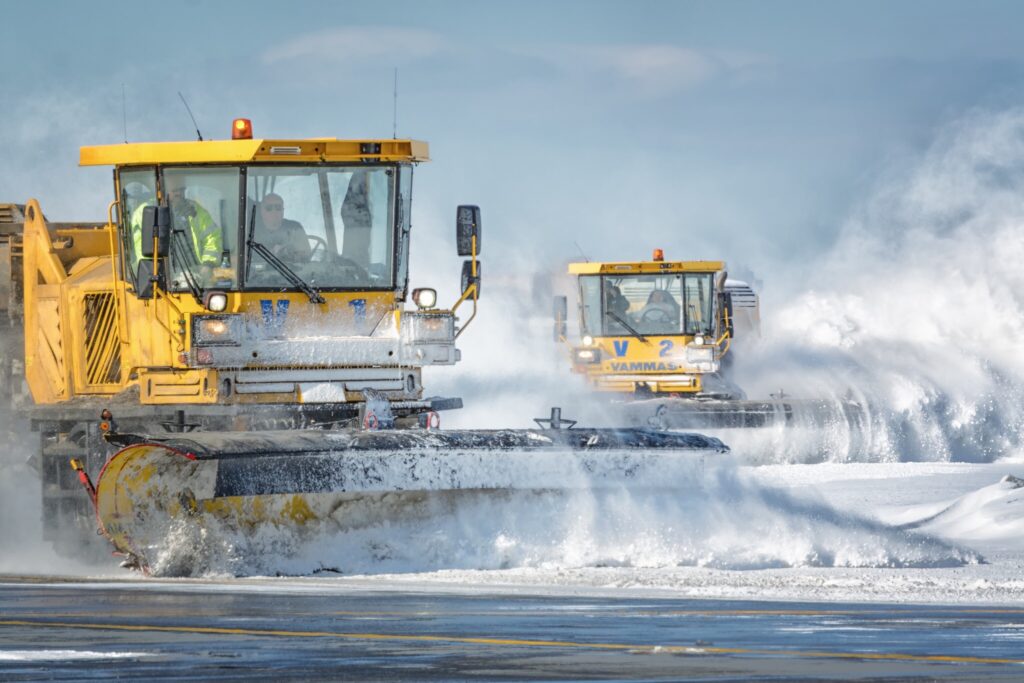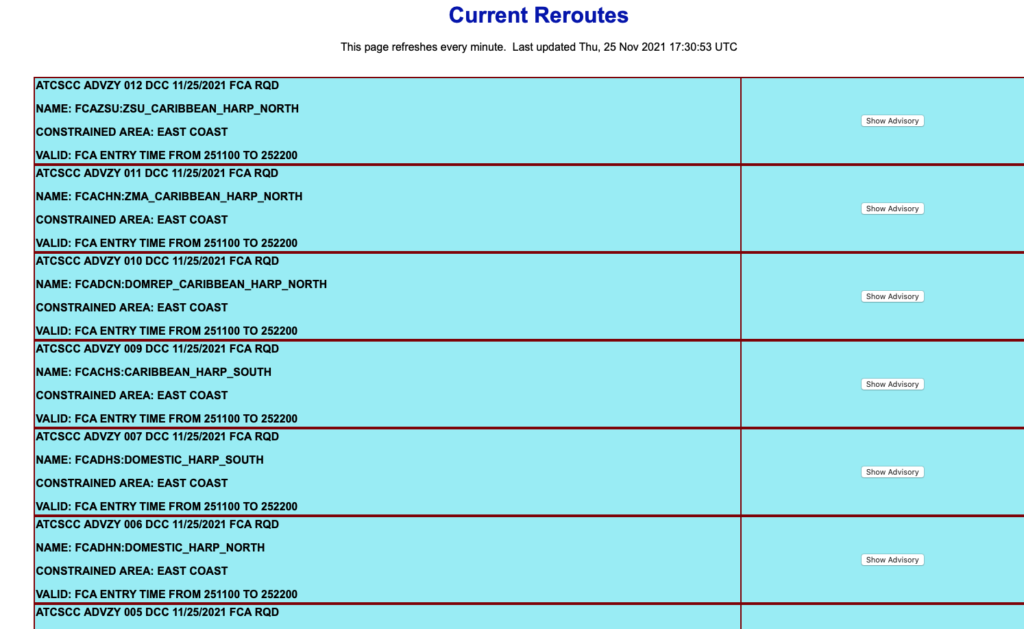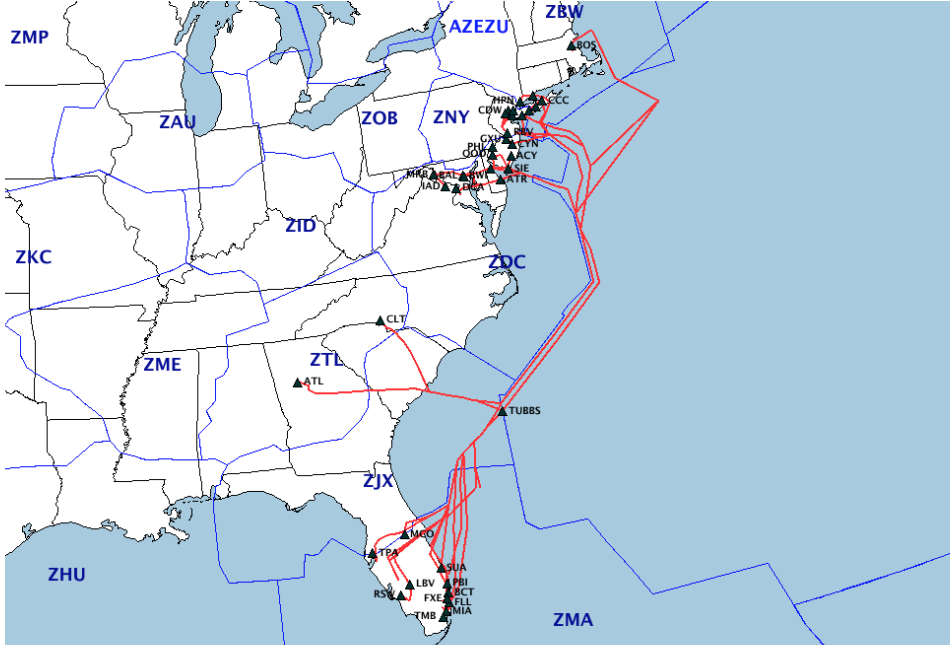The NBAA recently did a very helpful podcast episode on preparing for the holiday season traffic.
What they are saying (the short version)
Watch out for increased traffic volumes during the holiday season. This will more than likely mean more traffic flow management initiatives and ground delay programs. Plan ahead.
What they are saying (the slightly longer version)
The weekends before and after major holidays seem to be the busiest, and this year is expected to be no different. Numbers are already looking higher than the pre-pandemic figures (2019) for the same season. So pre-planning and thinking about what might impact you, your flight or the airspace and airports in general is important.
The two main busy spots
- Any popular ski resort airport
- Any airspace that is usually busy and which is a route to or from popular holiday destinations – so areas like the NY metros, NE coast and routes to/from Florida and the Caribbean.
What they are saying (in much more detail)
The bits that are always busy
The north east coast and around New York commercial terminals get busy. It is already up to 80-90% normal volumes and the return of international flights means the remaining 10-20% is filling up fast. The same goes for the Florida and Caribbean to the north east routes, partly because all the airports and airspace along that region tends to be busy anyway.
How busy this all gets increases “just a little” during holiday season which means you are probably going to experience more traffic flow management, initiatives and ground delays. These mean you need to pre-plan more, particularly in terms of where you are filing to fly, and the fuel you are counting on needing to use.
There is an added complication in that the Presidential TFR in Wilmington, DE might get activated – and when it does, it has a further knock on effect on this already quite busy area. We wrote about that here if you want a read.

The NE coast and around the POTUS TFR are busy at the best of times.
The weather
The weather is a variable that can be hard to predict and the knock-on effect of it can be pretty far reaching. There are three things with the weather to really think about during the busy holiday season:
- Ski resort airports tend to be tough to operate into anyway. When the weather gets rough this adds to the challenge, and to possible delays – particularly as they often have limited ramp capacity.
- Major snow storms and other wintery weather at the large, busy airports can result in a backlog of traffic across the airspace as aircraft hold for the weather to clear or divert. This puts extra pressure on the surrounding Centers. Additionally, aircraft on the ground can see long de-icing queues, and this fills up ramp space with delayed departures which means arrivals might be delayed as well.

Delays due de-icing, clearing runways, of storms will have a knock on effect across the NAS.
The ski spots
Traffic volumes operating into places like Colorado, Wyoming, Utah, Idaho (particularly KASE/Aspen, KEGE/Eagle, KJAC/Jackson Hole, KSUN/Friedman Memorial) will be on the up during ski season and particularly over the holidays.
Again, the fact these are often difficult anyway, have logistic and operational challenges and limited ramp space, means disruptions can build up pretty quickly. If they fill up then ATC will put on a stop on GA flights routing to them and you might be airborne when that happens so plan your diversions or holding fuel!
Staff shortages
A final thing to think about is staff shortages – you might not care that the big airlines are lacking pilots, but if you use these big airlines to move yourself or your own pilots around then you might start caring a little more. Delays for them also mean disruption to other aircraft needing to use the airport (ramps) so avoid planning flights or crew through the major airports if you can.
What are they saying to help with it all.
When to fly
Think about whether you really need to fly on that Sunday after the holiday. If you can wait until Monday or Tuesday then do. The same actually goes for flying out – if you can avoid the peak times (generally the Thursday or Friday before) then you will avoid a lot of the traffic and a lot of the possible disruption.
Where to fly
Try to avoid the big, busy connection terminals like JFK, Newark, La Guardia where commercial volume is already high – both as a place for you to head to, or a place to send your crew through. Also have a think about your alternates and the traffic volumes at those.
Filing your flight plans
Get your flight plans in early – that way they are ab for the FAA and they will be included in the planning of traffic flow initiatives. File them short notice and on the day you will be an unknown and that can make it harder for ATC to accommodate you.
Know what’s going on
Check the FAA re-routes tab in advance. You’ll find info on current traffic management initiatives here as well. You can also take a look at the overall status of the NAS and make sure you have that big picture view before you fly.
Check the preview for the following day as well – the ops preview is posted after the 9pm planning call. You’ll find it on the advisory database and can use it to make a provisional Plan A and B if you are heading out the next day.

The Reroutes tab links to advisories and shows HARPs in force as well.
Check the weather
Pay attention to weather ahead of time and have those diversions planned out in advance. Also watch out for weather at larger airports because this can cause a ripple effect through the airspace. If Runway 11/29 at Newark closes then you’re going to see ground and air delays because of it…
But don’t assume no weather means no disruption. Even if its VFR along the east coast, if the volume is high there will be traffic management and airspace flow programs in place which might mean ground delays at Westchester or Teterboro…
Talk to your FBOs
Check with your FBOs in advance to confirm ramp space – even just prior to departure to see what’s happening on the day. Most of the Ski Resorts operate on a first come first served basis with no reservations, which can be great but can also lead to sudden capacity issues. Again, last minute stops for GA traffic might occur while you’re airborne and that could mean holding or diverting so check and plan in advance.
What else is going on out there?
Look out for HARP initiatives
Military airspace is often opened up to help ease congestion, particularly on Caribbean routes. In the past they have allowed access to airspace off the Mid-Atlantic which helps with the East Coast volumes, particularly in Jacksonville, Florida and Washington and DC Centers.
In previous years we’ve seen HARP routes between NY Metros/Philadelphia and Florida, as well as Boston Centers and Florida, and several in the Caribbean. Again, the great folk at the NBAA post some handy info on this so keep an eye out for their 2021/2022 info.
The routes are published in the FAA advisories as well so be sure to check these and file for them.
AZEZU
If operating between the Northeast and Florida then you probably know about the deep-water AZEZU route that keeps you out of the high volumes. Here is the section from the FAA playbook in case you aren’t familiar with it.
This route is changing from December 2nd and will become the WATRS deep-water route. There is actually no change to the routings, just the name, so the Playbook info remains more or less the same.

FAA Playbook AZEZU graphic
Our favourite page
We like this page where the NBAA post useful info on issues in regional airspace. It’s another one worth keeping an eye on.
Happy Holidays!
More on the topic:
- More: GPS U/S in the US
- More: Contrails, Chemtrails and Climate Change
- More: “Operation: Paperwork Misery” – new US rules on pilot data reporting are coming soon
- More: Reroutes over France … not because of an ATC strike, this time
- More: French ATC strike this weekend – Number 8
More reading:
- Latest: Teterboro: RIP the RUUDY SIX
- Latest: 400% increase in GPS Spoofing; Workgroup established
- Latest: GPS Spoofing WorkGroup 2024
- Safe Airspace: Risk Database
- Weekly Ops Bulletin: Subscribe
- Membership plans: Why join OPSGROUP?











 Get the famous weekly
Get the famous weekly 





